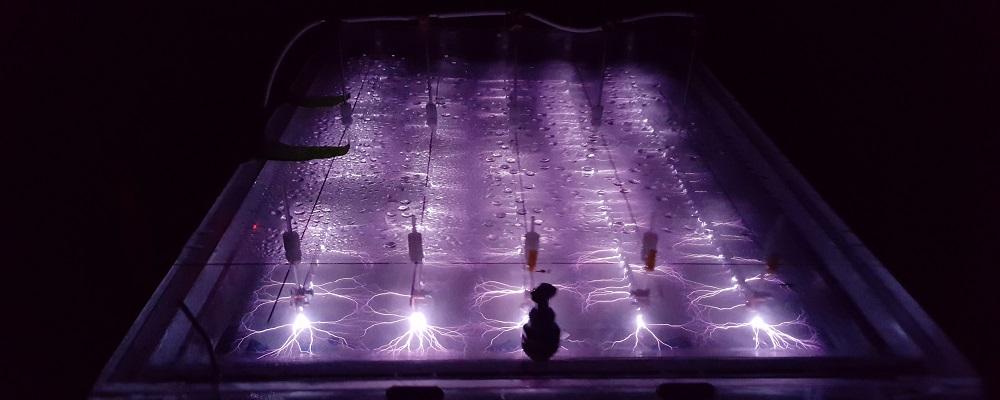
Civilian researchers from a New York university have demonstrated a method to destroy harmful pollutants tied to firefighting foam on military installations.
A two-week field demonstration at Wright-Patterson Air Force Base in Ohio showed how new plasma technology can degrade and destroy perfluoroctane sulfonate and perfluoroctanic acid in groundwater, according to Clarkson University and GSI Environmental, which are cooperating on a contract to treat contaminated water.
The contaminants, also known as PFOS and PFOA, are part of a larger group of synthetic chemical compounds, collectively called per- and polyfluoroalkyl substances, or PFAS. PFAS has contaminated drinking water systems, ground water and surface water on at least 698 sites identified by the Defense Department, including many National Guard facilities.
PFAS has been linked to numerous health problems, including cancer, high cholesterol and thyroid disease.
The September field demonstration used a plasma reactor to treat water containing the contaminants. Water was drawn from two monitoring wells at the Wright-Patterson fire training area and the reactor used water, electricity and argon gas to degrade the contaminants in minutes. No additional chemicals or additives are required.
The effort is one of several under development as the Defense Department seeks a cost-effective and sustainable environmental solution to the nationwide contaminations.
In a university release, researchers said the method is the only one that destroys PFAS molecules, instead of simply removing them from water.
“All of the other demonstrations that we’re aware of remove it from the water through filtration so there is still a PFAS containing waste,” said Dr. Tom Holsen of Clarkson University. “Our method actually destroys PFAS.”
The two-week test treated hundreds of gallons of groundwater. The next phase of the project will be a detailed analysis of the treated water and evaluations for further scaling-up of the plasma reactor design.
Meanwhile, several PFAS-related provisions are included in Senate and House versions of the fiscal 2020 National Defense Authorization Act. And a task force created by Defense Secretary Mark Esper continues to meet to address the contaminations while the Defense Department works to find a replacement for the firefighting foam.












